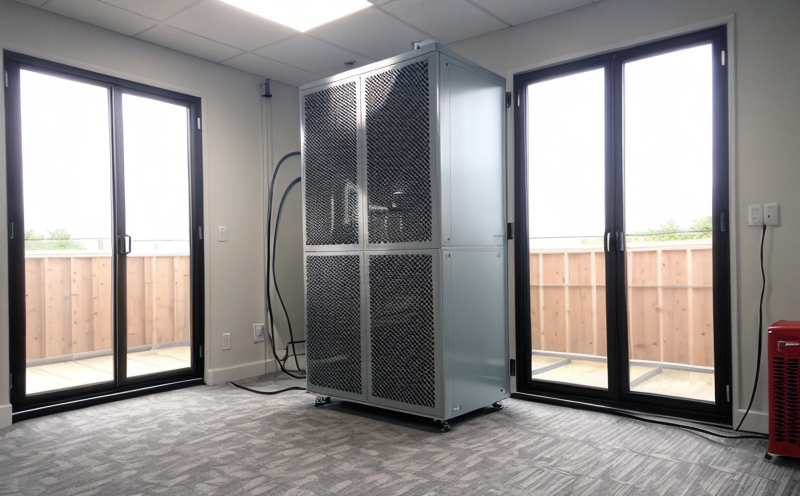ISO 29463 HEPA and ULPA Airflow Testing
The ISO 29463 standard provides a framework for ensuring that HVAC systems, particularly those used in cleanrooms, pharmaceutical plants, and other environments where air quality is paramount, are capable of maintaining the necessary levels of HEPA (High Efficiency Particulate Air) and ULPA (Ultra-Low Penetration Air) filtration. This service ensures that the airflow through these filters meets stringent requirements set by international standards.
HEPA and ULPA filters play a critical role in trapping submicron particles, which are invisible to the naked eye but can pose significant health risks if not contained properly. In industries such as pharmaceuticals, biotechnology, electronics manufacturing, and semiconductor fabrication, these filters must be tested rigorously to ensure they meet or exceed ISO 29463 specifications.
The testing process involves measuring airflow rates through the filter at various test pressures, typically ranging from 0.5 inches of water column (inWc) up to 12 inWc. The equipment used for this purpose includes precision manometers and flow meters capable of providing accurate measurements under controlled conditions.
The primary goal of ISO 29463 HEPA and ULPA Airflow Testing is not only compliance but also ensuring optimal performance. By adhering to these stringent standards, businesses can mitigate risks associated with poor air quality control, thereby protecting both personnel health and product integrity. This service is particularly beneficial for organizations that need to demonstrate adherence to regulatory requirements or improve operational efficiency.
In addition to meeting legal obligations, performing ISO 29463 testing helps facilities maintain consistent performance over time. Regular inspections allow operators to identify any potential issues early on, preventing costly downtime and ensuring continuous compliance with industry best practices.
The benefits of this service extend beyond mere regulation adherence; they also contribute significantly towards creating safer working environments, enhancing productivity, and maintaining high standards of quality control across all relevant processes. For instance, in a pharmaceutical setting, failure to meet these stringent airflow criteria could result not only in non-compliance penalties but also significant delays in product release or even recalls.
Scope and Methodology
The scope of ISO 29463 HEPA and ULPA Airflow Testing encompasses all aspects related to the performance evaluation of filters used within HVAC systems. Specifically, this includes testing at different pressure levels (0.5 inWc through 12 inWc) to assess how effectively each filter traps particles as defined by ISO standards.
The methodology involves setting up a controlled environment where airflow can be precisely measured using advanced instrumentation like differential pressure sensors and flow measurement devices. These tools enable accurate quantification of air velocity across the filter face, which is then compared against specified limits outlined in ISO 29463.
A detailed protocol outlines precise procedures for setting up test chambers, calibrating instruments, positioning filters correctly within the system, and conducting multiple runs to ensure consistency. Additionally, post-testing analysis includes visual inspections of filter media for any visible damage or blockages that might affect future performance.
Benefits
- Increased Compliance: Ensures adherence to international standards such as ISO 29463, thereby reducing the risk of legal action and ensuring consistent quality across facilities.
- Better Quality Control: Helps maintain high standards of product integrity by eliminating particles that could contaminate products during manufacturing processes.
- Enhanced Safety: Creates safer working environments by trapping harmful submicron particles, thus protecting workers' health and well-being.
- Operational Efficiency: Identifies and addresses inefficiencies early on, leading to reduced downtime and increased overall productivity.





